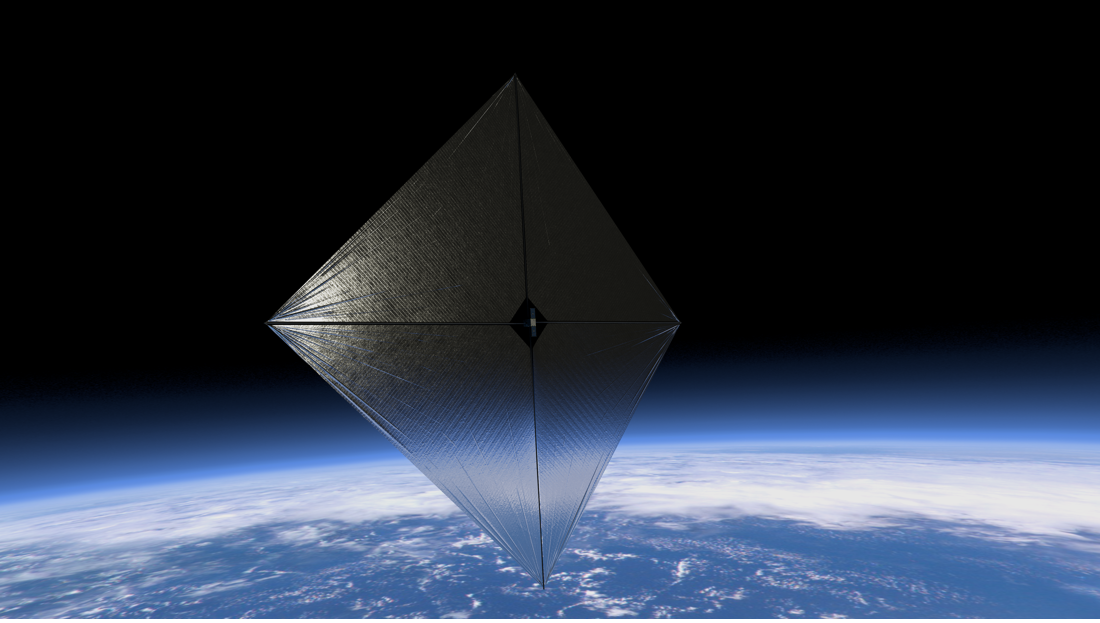- cross-posted to:
- technology@lemmy.world
- cross-posted to:
- technology@lemmy.world
Thankfully for us, the spacecraft that deployed the sail contains four cameras that can capture a panoramic view of both the reflective sail and the accompanying composite booms. The first of the high-resolution imagery is expected to be accessible on Wednesday, Sept. 4.
I can’t wait.
Though photons don’t have mass, they can force momentum when they hit an object — that’s what a solar sail takes advantage of.
Sounds like a bug.
It’s a feature.
Either way, NASA is already exploiting it. I guess, next they’ll find a way to glitch through the very fabric of the universe to teleport to a distant galaxy without moving at all or even using any energy.
Must be a problem with floating point precision.
Infinite energy glitch
Yeah, why do masless particles have momentum? And please not because law X says so.
In short, even though photons have no mass, they still have momentum proportional to their energy, given by the formula p=E/c. Because photons have no mass, all of the momentum of a photon actually comes from its energy and frequency as described by the Planck-Einstein relation E=hf.
From here: https://profoundphysics.com/if-photons-have-no-mass-how-can-they-have-momentum/
Essentially, momentum is a function of energy, not mass. It’s just that massive objects have way more momentum than massless ones.
Essentially, momentum is a function of energy, not mass.
Thanks! That’s the critical piece of information.
Witchcraft.
deleted by creator
This NASA video is pretty amazing. I was wondering how they did the booms and they are soft carbon fiber tubes rolled up on spools. I was imagining that you could simply spin the sail and use centrifugal force to expand it.
Maybe someone can answer me this: I’ve always wondered if a solar sail can only generate momentum away from the sun or if it can be angled to create momentum in other direction. Since the light is reflected and not absorbed, angling it e.g. 45° you change the “momentum” of the photons. That should also change the momentum impacted on the solar sail and spacecraft. Right?
Haven’t heard about the NASA design yet, but JAXA’s 2010 IKAROS used "Eighty blocks of LCD panels are embedded in the sail, whose reflectance can be adjusted for attitude contro ".
Oh wow interesting. So using LCD is more efficient in weight than using motors to tilt the sails? Or maybe the advantage is not having to counter any sail movement with gyroscopes… which cost energy too.
Or maybe the advantage is not having to counter any sail movement with gyroscopes… which cost energy too.
I think you nailed it right there.
That’s such a badass design, I love it.
A variable thrust and thrust vectoring propulsion system with no moving parts. I doubt that’s ever been done before…
Maybe someone can answer me this: I’ve always wondered if a solar sail can only generate momentum away from the sun or if it can be angled to create momentum in other direction.
Yeah, 100%. You can totally steer and control your orientation with a solar sail. This is one of the rare actually intuitive things when it comes to spaceflight. (with physics in space It seems like nothing actually works the way you’d expect it to, but this basically does)
We actually have some experience controlling orientation with “solar sails” too. I remember one example of a spacecraft which long after finishing its official mission was left to tumble out of control. Years later, some engineers were able to regain control, use the last of its propellant to counter its tumble and then keep it oriented correctly using only its solar panels as sails, light pressure was carefully controlled to keep the spacecraft oriented.
Ah thank you, never seen that mentioned. That makes it even more awesome for solar system exploration! The article mentioned expanding to much larger designs too.
PS: Now I wonder if assembling these solar sails with lightweight girders in orbit on a space station would be worth it. The spooling mechanism is awesome but if you could just send it up dis-assembled and assemble it in space they could probably be more efficient.
Well… I’m afraid I’m not sure if they’ll be effective for the ISS. The ISS sits in low orbit (a relatively high part of Leo, but none the less), so it hits some extremely thin atmosphere, which has a noticeable drag over time. For that reason the ISS has to boost its orbit a little every few months. My fear is that a solar sail large enough to have an effect on the ISS is probably large enough to add a whole lot of atmospheric drag, even from just the trace particles it encounters.
Oh right, yeah. Hopefully we’ll see a higher orbit space station that can do manufacturing like this.
Yeah, we may well end up seeing a lot more use of solar light pressure to orient spacecraft over the coming years, especially deep space probes and higher orbit satellites. Telecom satellites need a lot of power for their transmitters, so they generally have quite large solar arrays, I wouldn’t be surprised to see some of those using this method for station keeping. (Though these days they’re already using very efficient ion thrusters for station keeping, so they may not really need to use this method)
But while solar sail propulsion takes a lot of very specific design requirements, using solar pressure just for maintaining orientation doesn’t actually require any fancy hardware (if you already have solar panels), it’s all an entirely software solution. Which means it’s always a viable backup plan when hardware failures occur.
Yeah exploring for asteroid mining and the asteroid belt being 2-3 AU from the sun, you have 4 to 9 times less solar pressure. But you could still accelerate closer to the sun and then swing out. I imagine tiny cube sats with cheap solar sails could do much of the work there. Anyway, exciting times!
Well that’s a really interesting application though… 9 times less thrust may not actually be a very big deal. A solar sail probe would likely be a lot lighter than a fueled equivalent, so that means you have the payload mass to send more probes on the same launch. And asteroids don’t have meaningful amounts of gravity, so you can take as long as you want to get from one to another (you don’t need much thrust to overcome their gravity well). So yeah, I think more than likely you could make up for a lack of speed with sheer quantity.
Ramiel?
So hot right now!
Yo ho yo ho a pirates life for me!
I wonder how long it will take to get to Cardassia
First photo looks rather unspectacular: https://www.space.com/nasa-solar-sail-space-photo
NASA also has a “spot the diamond in the sky” challenge haha: https://www.space.com/nasa-solar-sail-space-photo








